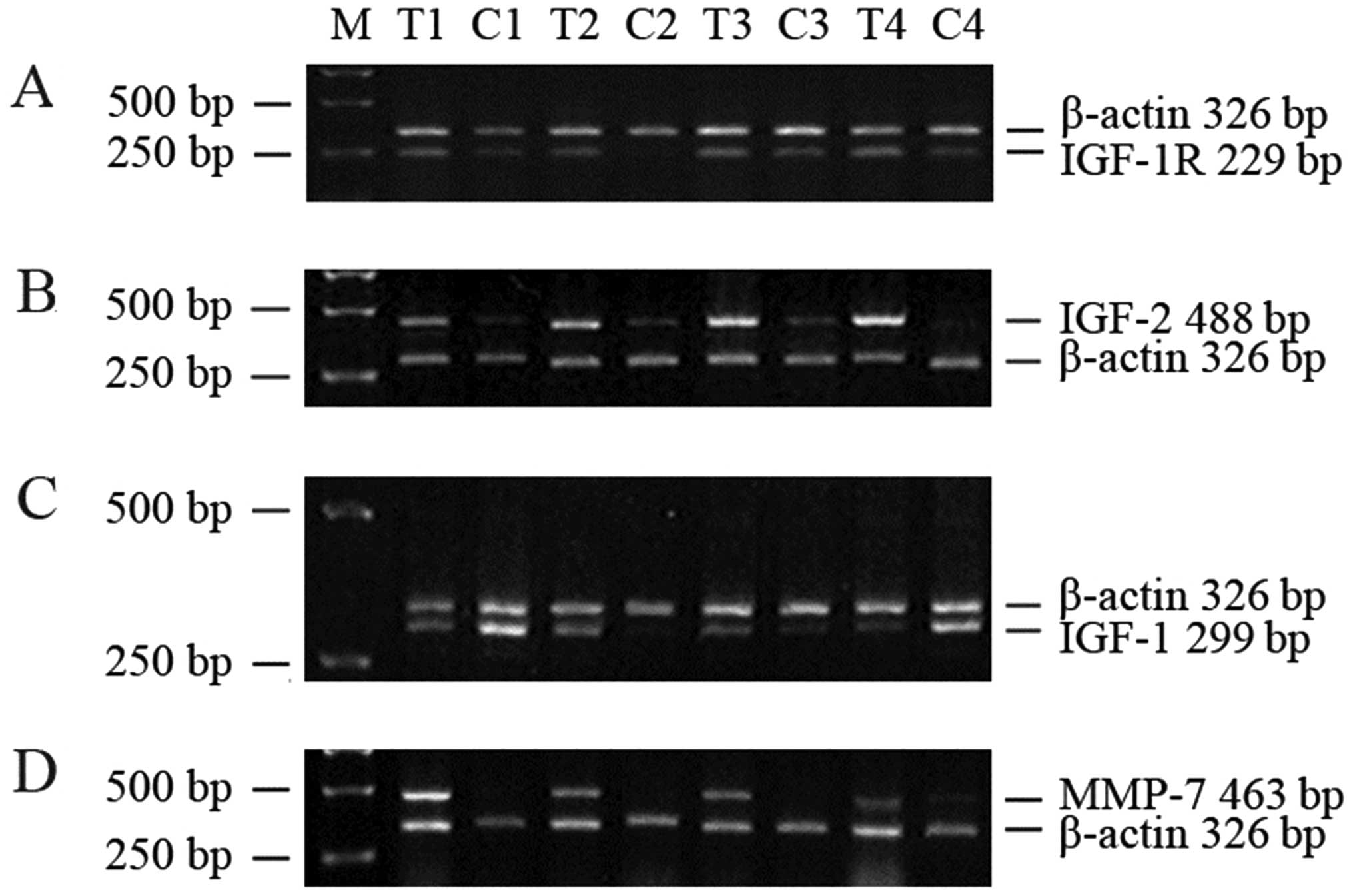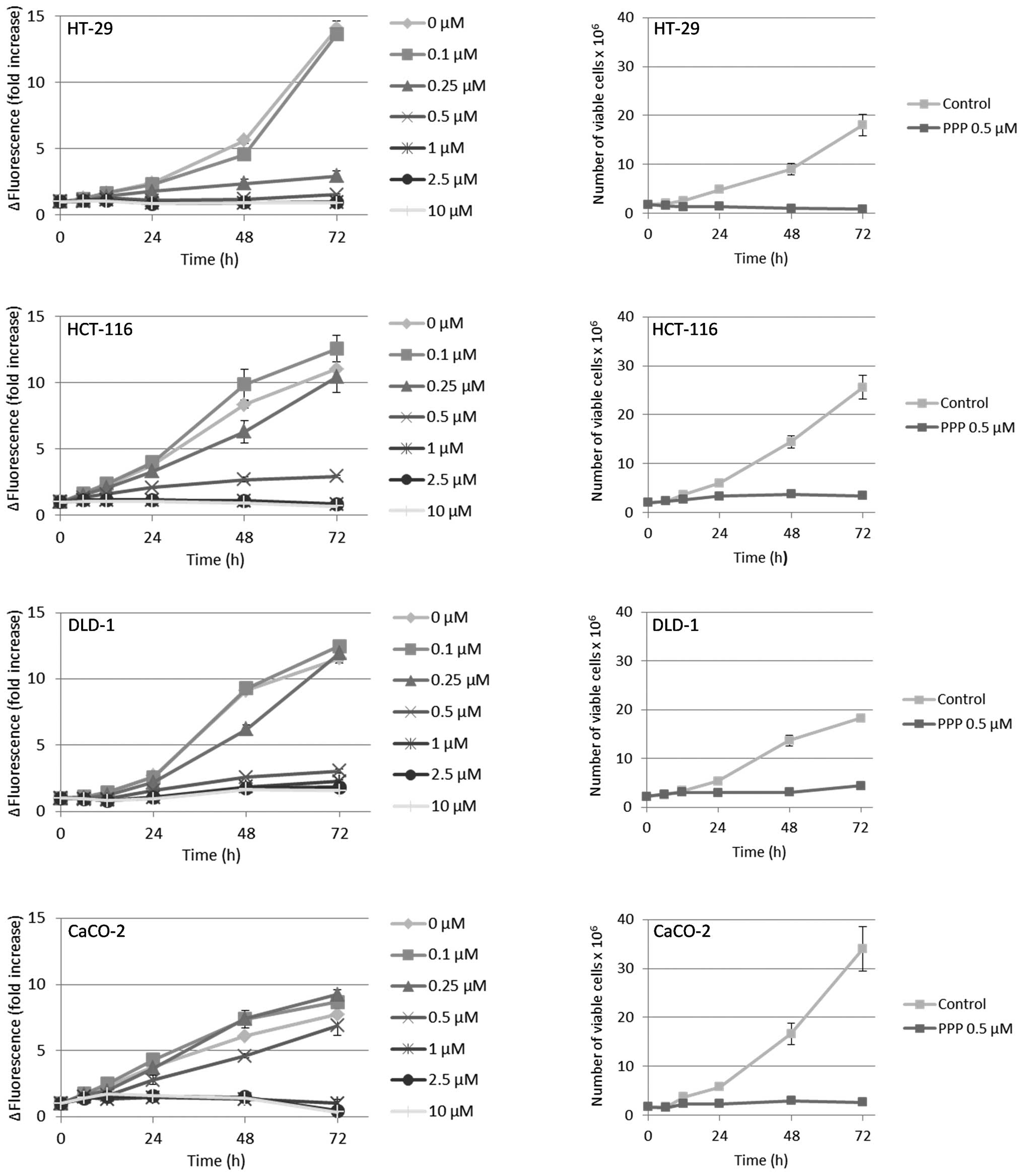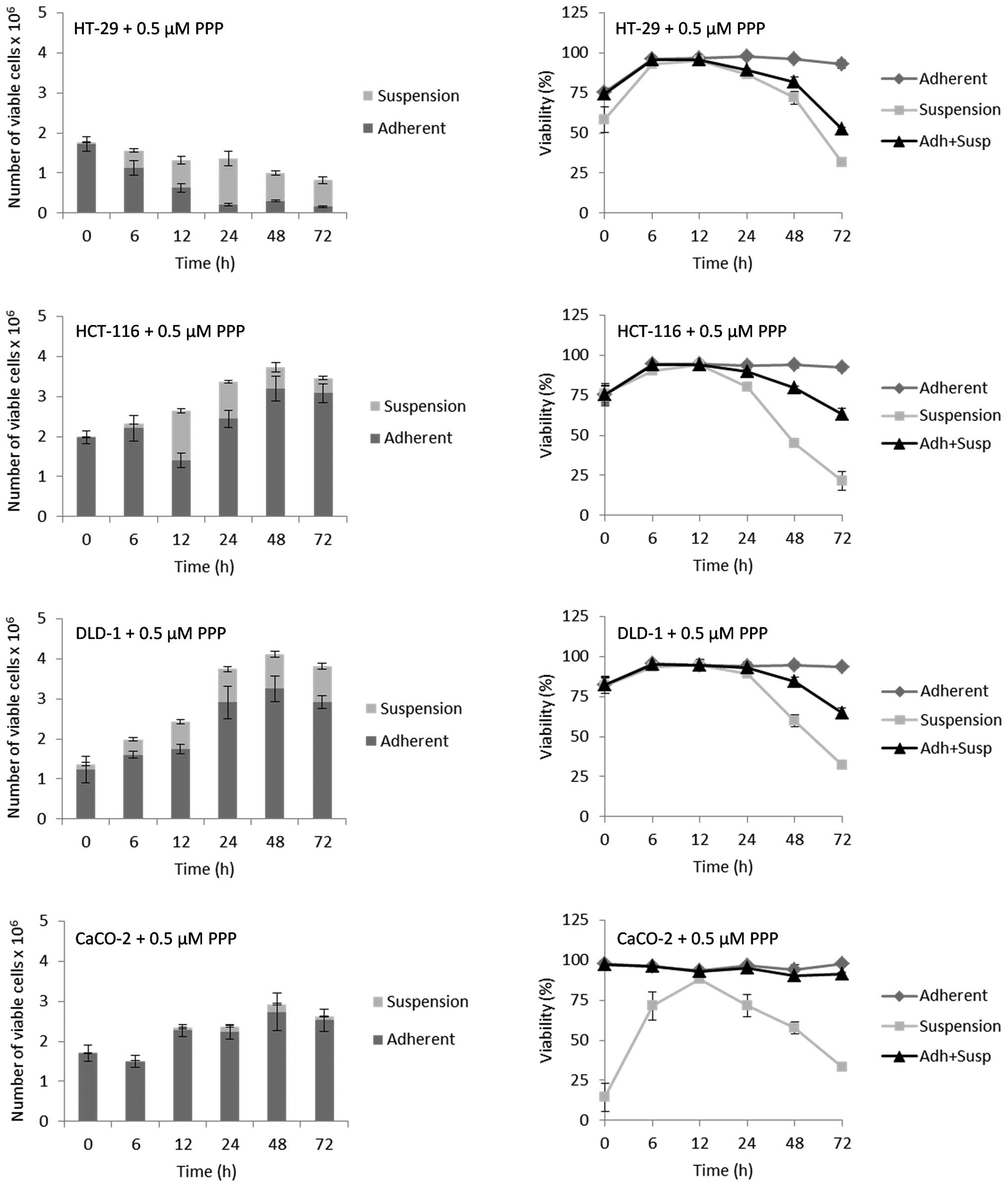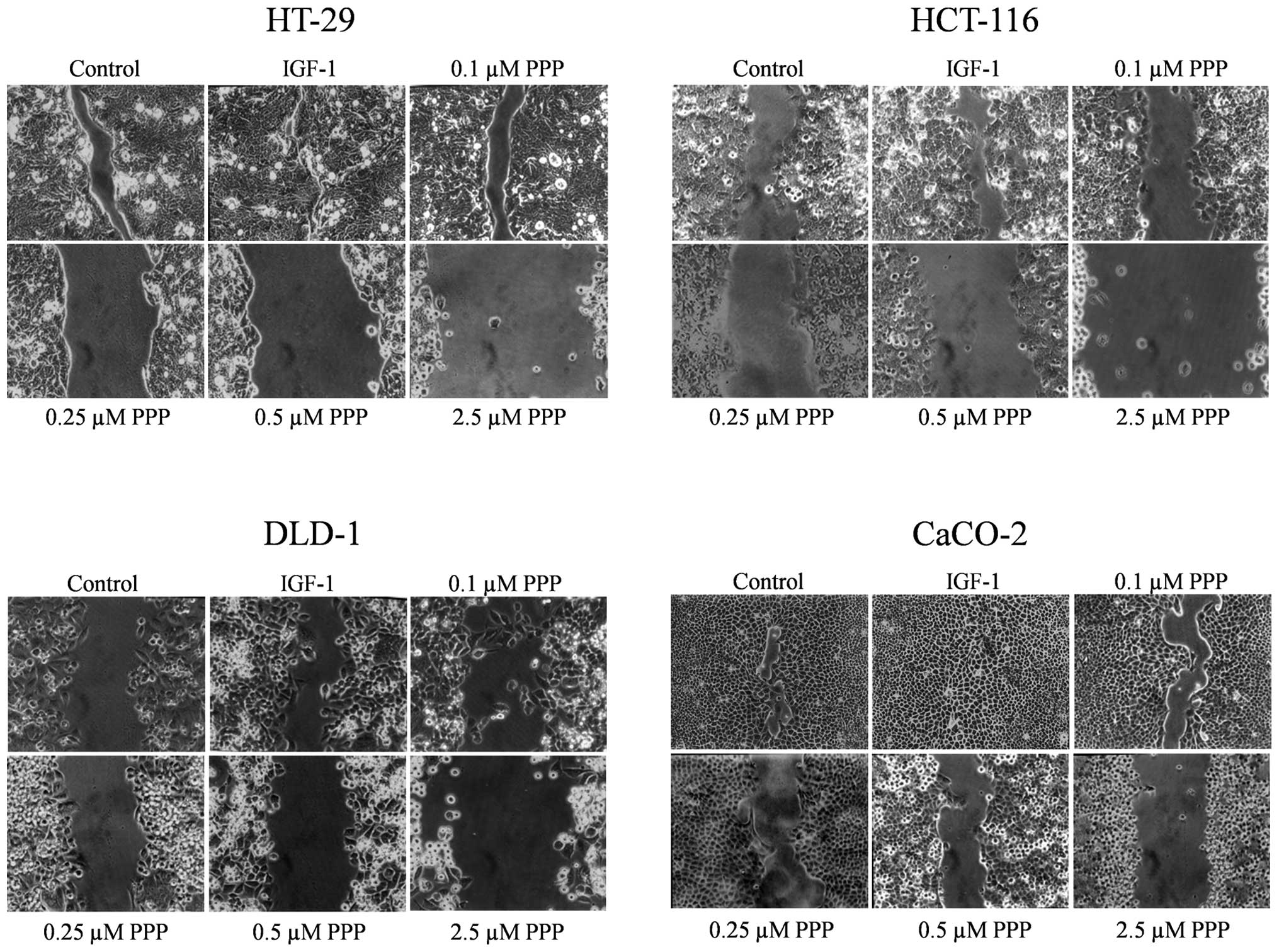|
1
|
Parkin DM, Bray F, Ferlay J and Pisani P:
Global cancer statistics, 2002. CA Cancer J Clin. 55:74–108. 2005.
View Article : Google Scholar
|
|
2
|
Sandhu MS, Dunger DB and Giovannucci EL:
Insulin, insulin-like growth factor-I (IGF-I), IGF binding
proteins, their biologic interactions, and colorectal cancer. J
Natl Cancer Inst. 94:972–980. 2002. View Article : Google Scholar : PubMed/NCBI
|
|
3
|
Center MM, Jemal A, Smith RA and Ward E:
Worldwide variations in colorectal cancer. CA Cancer J Clin.
59:366–378. 2009. View Article : Google Scholar : PubMed/NCBI
|
|
4
|
Ullrich A, Gray A, Tam AW, et al:
Insulin-like growth factor I receptor primary structure: comparison
with insulin receptor suggests structural determinants that define
functional specificity. EMBO J. 5:2503–2512. 1986.
|
|
5
|
Navarro M and Baserga R: Limited
redundancy of survival signals from the type 1 insulin-like growth
factor receptor. Endocrinology. 142:1073–1081. 2001.PubMed/NCBI
|
|
6
|
Belfiore A, Pandini G, Vella V, Squatrito
S and Vigneri R: Insulin/IGF-I hybrid receptors play a major role
in IGF-I signaling in thyroid cancer. Biochimie. 81:403–407. 1999.
View Article : Google Scholar : PubMed/NCBI
|
|
7
|
All-Ericsson C, Girnita L, Seregard S,
Bartolazzi A, Jager MJ and Larsson O: Insulin-like growth factor-1
receptor in uveal melanoma: a predictor for metastatic disease and
a potential therapeutic target. Invest Ophthalmol Vis Sci. 43:1–8.
2002.PubMed/NCBI
|
|
8
|
Xie Y, Skytting B, Nilsson G, Brodin B and
Larsson O: Expression of insulin-like growth factor-1 receptor in
synovial sarcoma: association with an aggressive phenotype. Cancer
Res. 59:3588–3591. 1999.PubMed/NCBI
|
|
9
|
Sachdev D and Yee D: Disrupting
insulin-like growth factor signaling as a potential cancer therapy.
Mol Cancer Ther. 6:1–12. 2007. View Article : Google Scholar : PubMed/NCBI
|
|
10
|
Girnita A, Girnita L, del Prete F,
Bartolazzi A, Larsson O and Axelson M: Cyclolignans as inhibitors
of the insulin-like growth factor-1 receptor and malignant cell
growth. Cancer Res. 64:236–242. 2004. View Article : Google Scholar : PubMed/NCBI
|
|
11
|
Stromberg T, Ekman S, Girnita L, et al:
IGF-1 receptor tyrosine kinase inhibition by the cyclolignan PPP
induces G2/M-phase accumulation and apoptosis in multiple myeloma
cells. Blood. 107:669–678. 2006. View Article : Google Scholar : PubMed/NCBI
|
|
12
|
Menu E, Jernberg-Wiklund H, Stromberg T,
et al: Inhibiting the IGF-1 receptor tyrosine kinase with the
cyclolignan PPP: an in vitro and in vivo study in the 5T33MM mouse
model. Blood. 107:655–660. 2006. View Article : Google Scholar : PubMed/NCBI
|
|
13
|
Menu E, Jernberg-Wiklund H, De Raeve H, et
al: Targeting the IGF-1R using picropodophyllin in the
therapeutical 5T2MM mouse model of multiple myeloma: beneficial
effects on tumor growth, angiogenesis, bone disease and survival.
Int J Cancer. 121:1857–1861. 2007. View Article : Google Scholar
|
|
14
|
Yin S, Girnita A, Stromberg T, et al:
Targeting the insulin-like growth factor-1 receptor by
picropodophyllin as a treatment option for glioblastoma.
Neurooncology. 12:19–27. 2010.PubMed/NCBI
|
|
15
|
Girnita A, All-Ericsson C, Economou MA, et
al: The insulin-like growth factor-I receptor inhibitor
picropodophyllin causes tumor regression and attenuates mechanisms
involved in invasion of uveal melanoma cells. Clin Cancer Res.
12:1383–1391. 2006. View Article : Google Scholar
|
|
16
|
Ekman S, Frodin JE, Harmenberg J, et al:
Clinical phase I study with an Insulin-like growth factor-1
receptor inhibitor: experiences in patients with squamous non-small
cell lung carcinoma. Acta Oncol. 50:441–447. 2011. View Article : Google Scholar : PubMed/NCBI
|
|
17
|
Midgley R and Kerr D: Colorectal cancer.
Lancet. 353:391–399. 1999. View Article : Google Scholar
|
|
18
|
Reinmuth N, Fan F, Liu W, et al: Impact of
insulin-like growth factor receptor-I function on angiogenesis,
growth, and metastasis of colon cancer. Lab Invest. 82:1377–1389.
2002. View Article : Google Scholar : PubMed/NCBI
|
|
19
|
Wu Y, Yakar S, Zhao L, Hennighausen L and
LeRoith D: Circulating insulin-like growth factor-I levels regulate
colon cancer growth and metastasis. Cancer Res. 62:1030–1035.
2002.PubMed/NCBI
|
|
20
|
Sounni NE and Noel A: Membrane type-matrix
metalloproteinases and tumor progression. Biochimie. 87:329–342.
2005. View Article : Google Scholar : PubMed/NCBI
|
|
21
|
Newell KJ, Witty JP, Rodgers WH and
Matrisian LM: Expression and localization of matrix-degrading
metalloproteinases during colorectal tumorigenesis. Mol Carcinog.
10:199–206. 1994. View Article : Google Scholar : PubMed/NCBI
|
|
22
|
Barozzi C, Ravaioli M, D'Errico A, et al:
Relevance of biologic markers in colorectal carcinoma: a
comparative study of a broad panel. Cancer. 94:647–657. 2002.
View Article : Google Scholar : PubMed/NCBI
|
|
23
|
Adachi Y, Yamamoto H, Itoh F, Hinoda Y,
Okada Y and Imai K: Contribution of matrilysin (MMP-7) to the
metastatic pathway of human colorectal cancers. Gut. 45:252–258.
1999. View Article : Google Scholar : PubMed/NCBI
|
|
24
|
Nielsen BS, Timshel S, Kjeldsen L, et al:
92 kDa type IV collagenase (MMP-9) is expressed in neutrophils and
macrophages but not in malignant epithelial cells in human colon
cancer. Int J Cancer. 65:57–62. 1996. View Article : Google Scholar : PubMed/NCBI
|
|
25
|
Horiuchi S, Yamamoto H, Min Y, Adachi Y,
Itoh F and Imai K: Association of ets-related transcriptional
factor E1AF expression with tumour progression and overexpression
of MMP-1 and matrilysin in human colorectal cancer. J Pathol.
200:568–576. 2003. View Article : Google Scholar
|
|
26
|
Liang CC, Park AY and Guan JL: In vitro
scratch assay: a convenient and inexpensive method for analysis of
cell migration in vitro. Nat Protoc. 2:329–333. 2007. View Article : Google Scholar : PubMed/NCBI
|
|
27
|
Buck E and Mulvihill M: Small molecule
inhibitors of the IGF-1R/IR axis for the treatment of cancer.
Expert Opin Investig Drugs. 20:605–621. 2011. View Article : Google Scholar : PubMed/NCBI
|
|
28
|
Reinmuth N, Liu W, Fan F, et al: Blockade
of insulin-like growth factor I receptor function inhibits growth
and angiogenesis of colon cancer. Clin Cancer Res. 8:3259–3269.
2002.PubMed/NCBI
|
|
29
|
Hakam A, Yeatman TJ, Lu L, et al:
Expression of insulin-like growth factor-1 receptor in human
colorectal cancer. Hum Pathol. 30:1128–1133. 1999. View Article : Google Scholar : PubMed/NCBI
|
|
30
|
Weber MM, Fottner C, Liu SB, Jung MC,
Engelhardt D and Baretton GB: Overexpression of the insulin-like
growth factor I receptor in human colon carcinomas. Cancer.
95:2086–2095. 2002. View Article : Google Scholar : PubMed/NCBI
|
|
31
|
Peters G, Gongoll S, Langner C, et al:
IGF-1R, IGF-1 and IGF-2 expression as potential prognostic and
predictive markers in colorectal-cancer. Virchows Arch.
443:139–145. 2003. View Article : Google Scholar : PubMed/NCBI
|
|
32
|
Nakamura M, Miyamoto S, Maeda H, et al:
Matrix metalloproteinase-7 degrades all insulin-like growth factor
binding proteins and facilitates insulin-like growth factor
bioavailability. Biochem Biophys Res Commun. 333:1011–1016. 2005.
View Article : Google Scholar
|
|
33
|
Baserga R: Targeting the IGF-1 receptor:
from rags to riches. Eur J Cancer. 40:2013–2015. 2004. View Article : Google Scholar : PubMed/NCBI
|
|
34
|
Vasilcanu R, Vasilcanu D, Sehat B, et al:
Insulin-like growth factor type-I receptor-dependent
phosphorylation of extracellular signal-regulated kinase 1/2 but
not Akt (protein kinase B) can be induced by picropodophyllin. Mol
Pharmacol. 73:930–939. 2008. View Article : Google Scholar
|
|
35
|
Vasilcanu R, Vasilcanu D, Rosengren L, et
al: Picropodophyllin induces downregulation of the insulin-like
growth factor 1 receptor: potential mechanistic involvement of Mdm2
and beta-arrestin1. Oncogene. 27:1629–1638. 2008. View Article : Google Scholar : PubMed/NCBI
|
|
36
|
Duan Z, Choy E, Harmon D, et al:
Insulin-like growth factor-I receptor tyrosine kinase inhibitor
cyclolignan picropodophyllin inhibits proliferation and induces
apoptosis in multidrug resistant osteosarcoma cell lines. Mol
Cancer Ther. 8:2122–2130. 2009. View Article : Google Scholar
|













